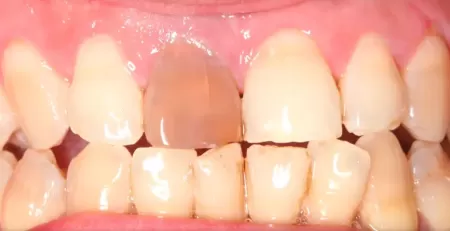Spit Don’t Rinse Toothpaste For Better Oral Health
Brushing our teeth is an essential part of our daily oral hygiene routine. However, it’s not just about brushing but also our techniques contributing to optimal oral health. One common misconception is the tendency to rinse our mouths with water after brushing, washing away the residual toothpaste.
By spitting out toothpaste and avoiding excessive swallowing, individuals can maintain a healthy balance between obtaining the benefits of fluoride and minimizing the risks associated with excessive fluoride intake. This approach allows for optimal oral health while reducing the potential negative effects of swallowing excessive toothpaste.
The Role of Fluoride
Toothpaste contains fluoride, a mineral vital in strengthening tooth enamel and preventing decay. Spitting out toothpaste after brushing allows the fluoride to remain in contact with our teeth for an extended period, maximizing its effectiveness in remineralizing and protecting our enamel.
While fluoride benefits our teeth when used in the recommended amounts, excessive swallowing of toothpaste can lead to potential health risks. Children often swallow larger amounts of toothpaste. As a result, it’s vital to help educate kids with proper brushing techniques.
Swallowing large amounts of toothpaste can result in an excessive fluoride intake, which may lead to a condition called fluorosis, characterized by dental enamel discolouration.
Spitting and not rinsing toothpaste after brushing is crucial for optimal oral health. By promoting proper brushing techniques and emphasizing the importance of spitting out toothpaste after brushing, individuals can enjoy the benefits of fluoride while minimizing the risks.
Extended Exposure to Fluoride
Rinsing immediately after brushing washes away the fluoride before it can fully benefit our teeth. Spitting out the excess toothpaste without rinsing allows the fluoride to continue working, providing a protective shield against acid attacks and strengthening the teeth against cavity formation.
Enhanced Cavity Prevention
Keeping the fluoride from the toothpaste in contact with our teeth after brushing enhances its ability to prevent cavities. Fluoride remineralizes weakened areas of the enamel and forms a protective barrier against harmful bacteria and acid erosion.
Proper Brushing Technique
Spitting and not rinsing toothpaste also reinforces the importance of using the appropriate amount and proper brushing technique. It encourages individuals to focus on brushing for the recommended two minutes, covering all tooth surfaces and gumline thoroughly.
Flavour Preference
Some individuals may find the taste of toothpaste refreshing and enjoyable. The pleasant taste can linger by spitting and not rinsing, promoting a positive oral care experience and encouraging individuals to maintain consistent brushing habits.
Expert Recommendations
Dental professionals, including dentists and hygienists, commonly advise patients to spit and not rinse toothpaste after brushing. Following their guidance ensures that individuals gain the maximum benefit from fluoride toothpaste and promote overall oral health.
Children under six should use a pea-sized amount of toothpaste, while older children and adults can use a slightly larger one.
Oral Health Professionals strongly advise against swallowing excessive amounts of toothpaste. They recommend supervising young children during brushing, ensuring they use appropriate toothpaste, not swallowing, and teaching them to spit it out after brushing.
Dentists also guide and recommend fluoride use to patients. They consider individual needs and the specific risk factors associated with each patient.
How long should you brush your teeth?
The recommended brushing time for optimal oral hygiene is two minutes. Brushing for this duration allows enough time to thoroughly clean all tooth surfaces, including the front, back, and chewing surfaces. It ensures that plaque and food particles are effectively removed, reducing the risk of tooth decay, gum disease, and bad breath. To ensure adequate brushing time, use a timer or divide your mouth into four quadrants and spend 30 seconds on each.
Remember to use gentle, circular motions and pay attention to all areas of your mouth, including your teeth, gums, and tongue.
What about using mouthwash to rinse after brushing my teeth?
Using mouthwash after brushing your teeth can be a beneficial addition to your oral hygiene routine. While it is unnecessary for everyone, mouthwash can provide extra benefits that may enhance oral health. Mouthwash can help freshen your breath, reach areas that may have been missed by brushing and flossing alone, and provide an extra layer of protection against plaque and gum disease. Choosing a mouthwash appropriate for your specific needs is important, whether for combating bad breath, reducing plaque, or addressing other oral health concerns.
Mouthwash with fluoride can provide additional benefits for your oral health. Fluoride is a mineral that helps strengthen tooth enamel and protects against tooth decay. Using a mouthwash with fluoride can help remineralize weakened areas of the teeth, making them more resistant to acid attacks and cavity formation. It can also help reduce sensitivity and promote overall oral health.
However, it is recommended to follow the instructions on the mouthwash label and consult your dentist for personalized advice on whether or not to use mouthwash and which type may be most suitable for you.
Summary
Proper oral care involves brushing our teeth and following recommended techniques. Spitting and not rinsing toothpaste after brushing allows the fluoride to remain in contact with our teeth, enhancing its effectiveness in preventing cavities and strengthening tooth enamel. By embracing this practice, we optimize our oral health and maximize the benefits of fluoride toothpaste.
Consider your dental professional for personalized advice and recommendations regarding your oral care routine, including proper brushing techniques and product choices.







